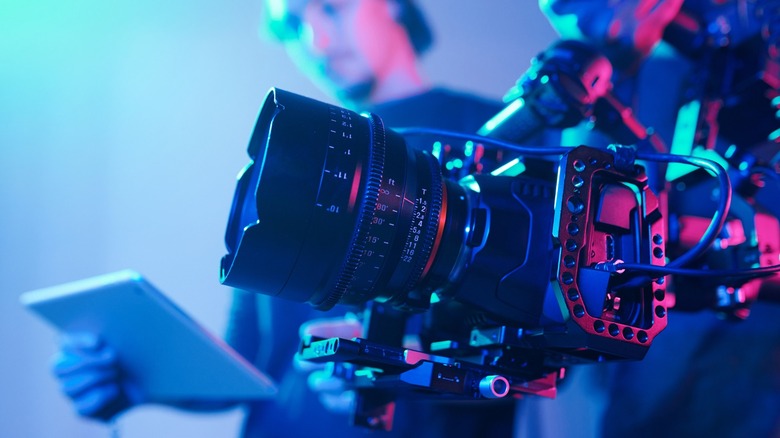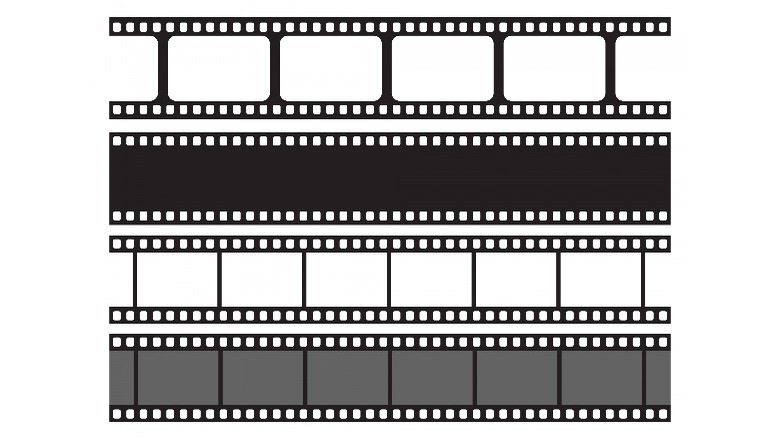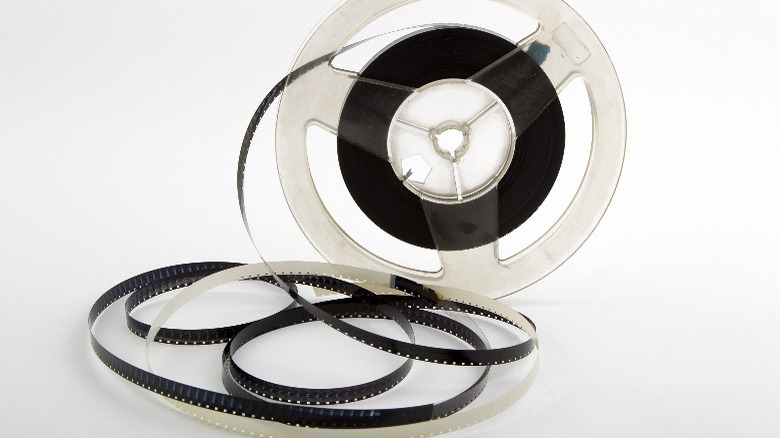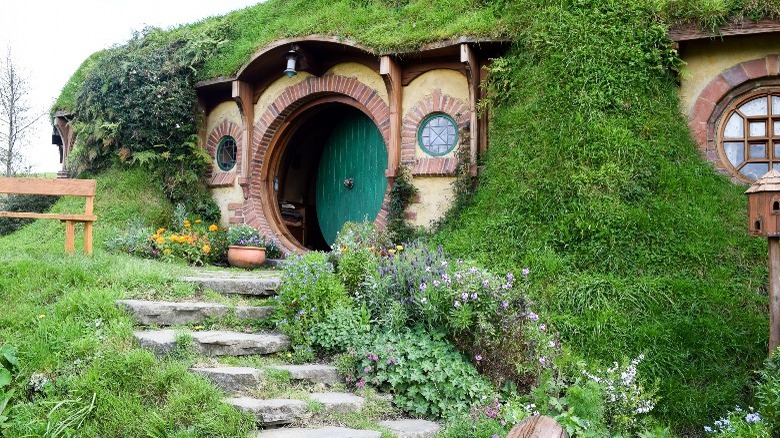Here's Why So Many Movies Are Still Shot At 24 FPS
Take the latest iPhone, hold it horizontally, turn on the video camera on default settings, and have your friends act out a scene. When you replay that video, something about it doesn't have that movie quality — even after adding filters. Part of the reason is that you're not using the right cinematic frame rate, 24 FPS.
For many film buffs, there is a deeply entrenched idea that the more frames per second (FPS), the better the quality. While that may be somewhat true in arenas that rely on graphics, like gaming, this ideology doesn't hold in the cinematic world. As a result, 24 FPS has remained the de facto frame-flipping rate for a century because it makes movies look cinematic.
In a movie, everything, from lighting to camera angles to sound environment to FPS, is an artistic choice. Shooting a film at a higher FPS may look more "modern," but it would be too realistic to have that cinematic effect most movies have. Think of it this way: imagine you saw a painting that looked exactly like a photograph; while that is cool, would it still feel like a painting? The imperfection is what makes the painting the same way 24 FPS makes a movie feel more like a movie.
Apart from being the default cinematic style, there is a strong historical, economic, and technical context for why many directors have chosen 24 FPS for nearly 100 years. These are rooted in how filmmaking has organically evolved even before the 1920s.
What exactly is FPS?
If you already know all about frame rates, feel free to skip this part. This section is for people new to the motion picture and display world.
As you may know, FPS stands for "frames per second." A video or a video game is a collection of still images displayed quickly to emulate a continuous stream and motion. Each "frame" is a still image. It's meant to measure the rate at which the still images appear on the screen, also known as frame rate. So, 24 FPS means 24 images for every second.
Higher FPS often mean better visual fluidity but the content looks more natural too. On the other hand, lower FPS can lead to poorer transitions and choppier video playback. In video games, especially first-person shooters, how quickly images appear on screen, how long they stay at one consistent FPS, and how good the graphics look mean everything. However, filmmaking is a more traditional art with less flexibility, so filmmakers employ a low frame rate and use other tricks to make the playback look smooth and cinematic.
Why 24 FPS in particular?
Remember those funny Charlie Chaplin movies of the early 1900s? The ones with no sounds and "fast-forwarded" style. Those movies were filmed around 16 to 18 FPS but projected near 24 FPS. Shooting movies at low frame rates was popular then because higher frame rates meant more film stock and higher production costs.
Animators and filmmakers had discovered that around 16 to 18 frames per second was enough of a visual illusion for viewers to see continuous motion. Anything lower, and the viewers might be able to make out individual frames, breaking immersion and the notion of fluidity. Making films near the illusion threshold saved costs and still did the job.
Things changed when sound was introduced into movies in the late 1920s. Pacing 18-FPS films at 24 FPS was fine without sound, but forcing the sound to go faster was offputting. Some FPS uniformity across films was needed for easier sound synchronization. Filmmakers decided on 24 FPS because it was just enough for sound syncing, helping them save on costs.
How come we still shoot at 24 FPS?
Filmmaking technology has improved a lot in recent years. We now have cameras that can shoot trillions of frames per second. However, Hollywood movies still use 24 FPS as a standard for movie-making, and movies that aren't in that framerate still have versions projected in 24 FPS. Why?
The simple answer is tradition. We've come to associate the 24 FPS look and its characteristic motion blur with the feel of cinema. While higher FPS could mean smoother visuals, it doesn't look as cinematic as the motion blur and dream-like quality of 24 FPS. It has become so standard that there is a prevailing myth that human vision won't see high FPS. With 24 FPS as the cinematic frame rate, any other standard mostly doesn't feel right to viewers.
A related answer is convenience. Standards allow us to know what to expect and even let us create hardware that meets these standards. Modern TVs have a refresh rate capped at 60Hz, which isn't the best for displaying films with a frame rate higher than 60 FPS. You can learn more about the difference between refresh rate and frame rate in our dedicated guide.
Are there popular movies that weren't filmed in 24 FPS?
There are a few directors who made the creative decision to use a frame rate higher than 24 FPS. Whether this worked out depends on who you ask, but these movies were successful nonetheless. We'll list out a few of them and the reasons the directors gave for choosing the frame rates:
- "The Hobbit" trilogy: Director Peter Jackson decided to shoot all three "The Hobbit" movies in 48 FPS. He aimed to enhance the 3D and animation effects, improve the landscape shots, and make the movie easier to watch. However, according to Forbes, the unintended consequence was making the film look fake.
- "Avatar: The Way of Water:" James Cameron's film uses 24 and 48 FPS. This also has mixed reception. Some say it has a soap opera effect and makes expensive production elements appear cheap.
- "Gemini Man:" Ang Lee's 2019 movie starring Will Smith is a high frame rate (HFR) movie with 120 FPS. Critics have said that the hyper-reality detracts from the movie-like feel, lending it a video game footage or TV demo clip quality.
Whether HFR becomes the future of movies is yet to be decided. However, many experienced filmmakers tend to stick to 24 FPS for better suspension of disbelief.




